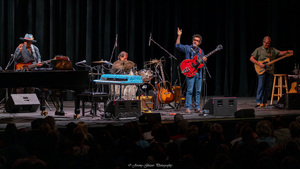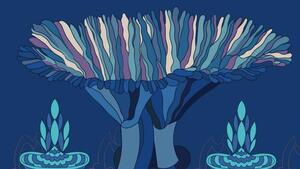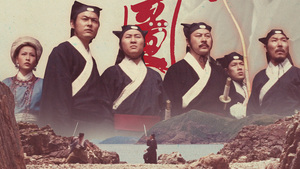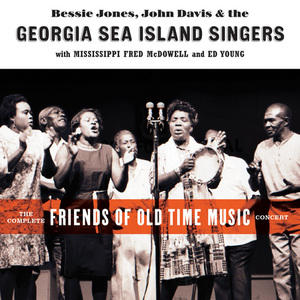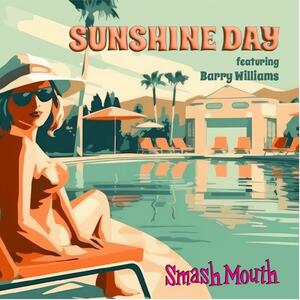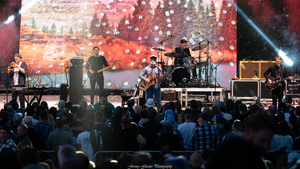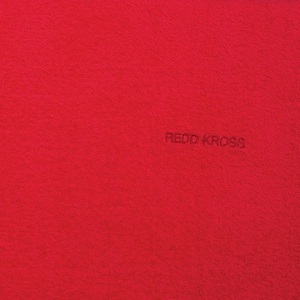When Circuits Learned to Sing
Two DVDs delve into the origins of electronic music.
by Bob Pomeroy
My Dad wasn’t pleased when I stopped being a teenage Classical music snob and became an art rock geek. I remember him muttering in frustration at another serenade from Emerson Lake and Palmer that if he’d known I was going to listen to electronic noise, he wouldn’t have bought the stereo. Looking back, I can see that ELP’s squelch and squeak renditions of Prokiev and Copland were self-indulgent messes. As a junior in high school, they seemed pretty damned cool. As I moved into college, I discovered punk rock and then the icey cool sounds of proto-electronica. The bombast of ELP gave way to the equally pompous, but far cooler sounds of Japan, OMD, the Human League.
You can blame this bout of nostalgia on a pair of documentaries from Plexfilm. The documentaries bridge the gap between my high school art rock obsessions and my later dalliance with UK electo-pop. The first of these films chronicles the life and times of electrical engineer, Robert Moog. The second film takes a look at the life and death of the post-punk Sheffield scene. Together, the films give a good (if highly selective) introduction to the birth of electronic music.
The meatier of the two films is MOOG. It’s impossible to look at the half century career of Robert Moog without taking in a huge panorama of musical styles. In the film, Moog comes across as a likeable, geeky professor. As a teenager, Moog built Theremins, the primitive, touchless electronic instruments heard in countless Science Fiction films and on pop records like the Beach Boys’ “Good Vibrations.” As an electrical engineer, Moog experimented with creating electronic sounds. He invented the modern synthesizer and, for a time at least, Moog became a brand name much like Fender or Gibson or Kleenex..

MOOG the film focuses on three interrelated themes; the development of electronic music, the evolution of electronic instruments and Bob Moog’s spiritual quest for that which is just beyond perception. The film takes a non-linear path around these themes, which at first is a little confusing. We cut from concert footage, to reminiscences with musicians to Bob talking about gardening. At first, you wonder what one has to do with the other. As the film progresses, you sync in to the reality that this is how Bob Moog sees the world. The organic beauty of a vegetable garden is the same to him as the organic life of the circuits that sing in his instruments.
My favorite moments in MOOG are quiet, offbeat segments. I love the opening sequence of an ancient audio letter sent to a college describing some new noises. The old audio has been animated for one of the film’s more colorful segments. I also love the scene where a somewhat uncomfortable-looking Bob Moog is caught between Rick Wakeman (Yes) and Bernie Worrell (Funkadelic) as they trade war stories. The war stories are funny, but Moog looks like he’d rather be back tending his garden. The last segment I want to mention is an idyllic scene of Moog beside a mountain stream playing a classical piece on Theremin. There are other great moments too. Some people will like the concert footage of Stereolab or Money Mark while others may really get into the nuts and bolts of instrument making. The film’s greatest strength is that it holds so many elements together.
Without the contributions of Robert Moog, the bands featured in Made in Sheffield wouldn’t have had much of a chance. This film documents the flowering of the Human League, Cabaret Voltaire, Heaven 17 and ABC in the industrial city of Sheffield. The film mixes archival footage with contemporary interviews to give a nice look at how this particular scene developed. The most influential band in the film began by messing around with sounds. Chris Watson recounts how the earliest Cabaret Voltaire shows mainly consisted of manipulating tape recordings of things like steam hammers and drop forges. Martin Ware of the Human League and Heaven 17 boasts about doing the punks one better because playing a synthesizer didn’t even require learning three chords. To varying degrees, the bands celebrated in Made is Sheffield were synthesizer-based pop bands.

What makes Made in Sheffield rather unique for a scene documentary is that most of the bands featured are no longer active. When you look at documentaries made on Seattle, Chicago or Athens, that were made at or near the height of their buzz, there is a feeling that every band interviewed is going to be famous. In this look back on Sheffield, we know who made it big, but we also get to meet the also-rans and some of the guys who never had a chance. Some of the better moments in the film are interviews with members of the Extras. In their day, they were the buzz band in town. It’s amusing to hear them recount how they made their big move to London at exactly the moment when the music business discovered Sheffield. It’s a good story about being in the right place at the wrong time.
Director Eve Wood is a bit selective in her chronicle of Sheffield. She gives the most screen time to the electronic music groups while giving a casual mention that the Human League opened a gig for another local band called Def Leppard. Pulp show up sparingly while other bands like Comsat Angels are only mentioned in passing. At least Wood does acknowledge that these sounds were going while telling a good story.
Plexfilm has packed both of these DVD with lots of extras. Both include extensive selections of deleted scenes, additional interviews and concert footage. Together, these films are a great double feature for anyone interested in the evolution of electronic music and the roots of what is now called electronica.
Plexi Film: http://www.plexfilm.com ◼


